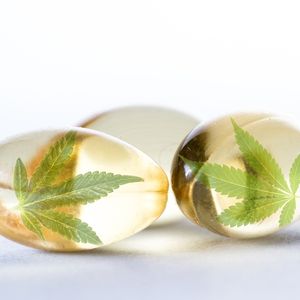The cannabis plant, commonly known as marijuana, has been cultivated and used by humans for medicinal and recreational purposes for centuries. The field of cannabis research is diverse and includes biochemical research of the plant, studies of the physiological and psychological pharmacology and social research regarding cannabis use and legalization.
One of the most important areas of research in the cannabis field relates to cannabinoids, the endocannabinoid system, and how cannabinoids affect humans through cannabis receptors.
What Are Cannabinoids?
Cannabinoids are a class of chemical compounds that are produced naturally by the cannabis plant. Cannabinoids possess the unique ability to interact with cannabinoid receptors in our cells, spread throughout the human body as part of the endocannabinoid system. Cannabinoids produce an array of varying effects such as increasing appetite, relieving pain or anxiety, and many other psychological and physiological responses.
As cannabis research continues, scientists have been able to isolate about 100 or more discrete, naturally occurring cannabinoids. Of those, the two cannabinoids with the most research behind them are:
- Delta-9-Tetrahydrocannabinol (THC)
- Cannabidiol (CBD)
Other cannabinoids that have received attention include:
- Cannabinol (CBN)
- Cannabigerol (CBG)
- Tetrahydrocannabivarin (THCV)
- Delta-8-Tetrahydrocannabinol, (Δ-8-THC)
When cannabinoids were first discovered in the 1940s, CBD and CBN were the first two cannabinoids identified. Not until the mid-1960s did researchers correctly identify the structure of THC. These are all Cannabinoids that are produced naturally by the plant and are called Phytocannabinoids, as opposed to synthetically produced cannabinoids.
Phytocannabinoids
For the purpose of this discussion, we are referring to naturally occurring Phytocannabinoids which naturally bind to cannabis receptors throughout the endocannabinoid system in the body. Phytocannabinoids are structurally analogous to the endocannabinoids that the body produces. They bind to the CB1 and CB2 cannabinoid receptors throughout the human endocannabinoid system.
All cannabinoids are different and produce different effects such as the high from THC sought by most recreational users or pain relief from CBD common in medical marijuana.
Cannabinoids in Trichomes
Cannabinoids are produced by the cannabis plant in the highest concentrations in the trichomes, the gland-like structures which appear on flowering buds and are part of the thick, sticky resin. The trichomes look like small, translucent glands that sparkle on the buds and start to turn from clear to a milky white closer to harvest time.
The density and the size of trichomes on the buds is a key indicator of the cannabinoid concentration of that plant. The more visible trichomes, the more cannabinoid rich resin your buds will produce. It is important to preserve these trichomes and be careful when handling marijuana buds as to not damage the important cannabinoids contained within them.
Cannabinoids are also found throughout the leafy structures of the cannabis plant in varying concentrations, although they are in the highest concentrations in the trichomes of flowering female cannabis plants.
The Endocannabinoid System
The endocannabinoid system (ECS) is a biological network of cell receptors in the human body consisting of endocannabinoids that interact with cannabinoids. Endocannabinoids are lipid-based, endogenous neurotransmitters that bind to cannabinoid receptors in the peripheral and central nervous system. Endogenous meaning originating from within, as cannabinoids from marijuana are not the only cannabinoids that the ECS interacts with.
Endocannabinoids are cannabinoids that the human body produces. We are learning more about the many cannabinoids found in the cannabis plant, although there is still a lot to learn about the endocannabinoids produced naturally in the body. The endocannabinoid system regulates many body functions and plays a critical role in many neural functions including memory, motivation, learning, motor coordination, pain, addiction, emotion, and many additional functions.
Prior to the discovery of cannabinoid receptors, the belief was that a generic interaction between cannabinoids from the cannabis plant and human cells caused a physiological or psychological effect from smoking marijuana. It was not until 1988 that scientists discovered cannabinoid receptors that initiated more research and understanding of the highly specific chemical mechanisms that cause these effects.
Cannabinoid Receptors Explained 
Endocannabinoids bind with cannabinoid receptors to become active. Learning how the endocannabinoids in our body interact with the endocannabinoid system is important to understand the recreational and therapeutic effects of cannabinoids from marijuana. Cannabinoid receptors are located in the membrane of various cells throughout our bodies, existing inside the cell and on the extracellular space.
Cannabinoid receptors act as a middleman when a cannabinoid latches onto it, it sends signals to the cell that cause an effect in cell function. Where these cannabinoid receptors are located suggests the function that it influences. Two classes of cannabinoid receptors exist in particular locations throughout the body.
Cannabinoid Receptors CB1 and CB2
There are two main known types of cannabinoid receptors, CB1 and CB2:
CB1: Cannabinoid receptor type CB1 are found primarily in the nervous system and appear in many other areas such as:
- Brain
- Liver
- Fat cells
- Pancreas
- Spinal cord
- Skeletal muscles
- Reproductive system
- Gastrointestinal tract
- Parts of the eye and retina
CB2: Research is showing that CB2 receptors play an important role the CBD cannabinoid, providing anti-inflammatory and other therapeutic, medicinal effects. Cannabinoid receptor type CB2 primarily exist in the immune system, with the greatest concentration in the spleen and other areas including:
- Immune cells
- Spleen
- Bone
- Fat cells
- Liver
- Reproductive system
- Gastrointestinal tract
While there may be additional cannabinoid receptors, CB1 and CB2 are the two main receptors identified and currently the subject of additional research.
THC, Tetrahydrocannabinol
The cannabinoid known as tetrahydrocannabinol, delta-9-tetrahydrocannabinol or Δ-9-tetrahydrocannabinol, is what we commonly refer to as THC. This cannabinoid is the one responsible for the psychoactive, euphoric, high effect people feel when smoking pot. THC is a cannabinoid popular in many concentrates as many people extract THC for making edibles.
THC binds to cannabinoid receptor CB1 in the brain to produce psychoactive effects by altering the release of chemicals such as dopamine, in the brain. When THC binds to CB1 receptors, other functions can be affected such as cognition, mood, memory, perception, and movement. Because of the various psychological effects there are many therapeutic uses for THC.
CBD, Cannabidiol
CBD is a cannabinoid that is non- psychotropic, meaning it does not produce any psychoactive effects like THC does. Some marijuana strains contain a combination or hybrid of THC and CBD, as some people enjoy the benefits of both cannabinoids. CBD can help to smooth out the psychoactive high and can help to reduce some negative effects that THC causes in some people like anxiety.
CBD is the cannabinoid that provides anti-inflammatory, medicinal, therapeutic benefits such as pain relief and anti-anxiety for many people. CBD is the most significant cannabinoid when it comes to medical applications and due to its lack of psychoactive effects, it is legal in many states were marijuana is not. CBD is the main cannabinoid responsible for wide availability of CBD based legal supplements and medicines. CBD can be extracted from hemp plants which contain very small, only trace amounts of THC. CBD is also cultivated in CBD dominant strains of cannabis plants as well. Research into Cannabidiol has advanced research into other cannabinoids.
CBN, Cannabinol
CBN is an identified cannabinoid that is barely present in cannabis plants although starting to receive more attention and research. The 2006 article in the National Library of Medicine concluded that CBN along with other cannabinoids had the ability to slow the growth of cancer cells. CBN, though a less popular cannabinoid, can be a viable non-psychoactive appetite stimulant as well as potential for other therapeutic uses.
CBG, Cannabigerol
CBG is also found in minute traces, less than 1%, in mature cannabis plants. Cannabis plants produce quite a lot of CBG, however, it is converted into other cannabinoids, primarily turning into THC and CBD. As scientists learn how CBG converts to either THC or CBD, they can learn more about directing cannabinoid production and cultivating strains high in CBD with low THC or the other way around. CBG itself is non-psychoactive, and shows promise for many medical applications including inflammation, pain, anxiety, and other conditions.
THCV, Tetrahydrocannabivarin
Tetrahydrocannabivarin and other cannabinoids with the suffix ‘œvarin’are a phytocannabinoid class of isometric homologues of the root compound, which is THC for the cannabinoid THCV. THCV has mixed results in some studies which show that it can act as an antagonist at CB1 receptors, which means that it could actually reduce psychoactive effects from THC. Other studies show that THCV can produce psychoactive effects which may be short-lived and intense and possibly stronger than THC. Other studies yet propose that THCV acts more like a cross between THC and CBD. Some might conclude that THCV can work like CBD in smoothing out effects of a strong high from THC, although it could act like a psychoactive stimulant in higher doses.
-8-THC, Delta-8-Tetrahydrocannabinod
This cannabinoid is new to the scene and is a slightly different psychoactive cannabinoid than its counterpart Delta 9 THC. Delta 8 THC is an isomer of Delta 9, although does not have as strong of a psychoactive effect and is thought to provide some therapeutic benefits due to its weaker psychoactivity. Some might call it “light marijuanaâ€. Because it is often derived from hemp and provides less psychoactive effects, some states do not regulate or ban the sale of delta 8 tetrahydrocannabinol. There is still more research to be conducted on this cannabinoid, however, and some states consider it not legal at the moment.
Crucial to Understand Cannabinoids and the Human ECS
Understanding how various cannabinoids from the cannabis plant interact with our own human endocannabinoid system is crucial to understanding the many therapeutic benefits cannabis provides. The possibilities are endless with what we know so far, and we can only hope that research continues to advance at a rapid rate to unleash the healing state of homeostasis cannabinoids can provide when understood and used properly.
Mosca Seeds offers high-quality, potent cannabis seeds cultivated with the finest in cannabis seed genetics. Choose from a variety of seed types including regular seeds, feminized, or autoflowering in Indica or Sativa dominant strains. Check out the Seed Bank to learn more and we hope you enjoyed this guide to understanding cannabinoids and the human endocannabinoid system.
Â
Â
